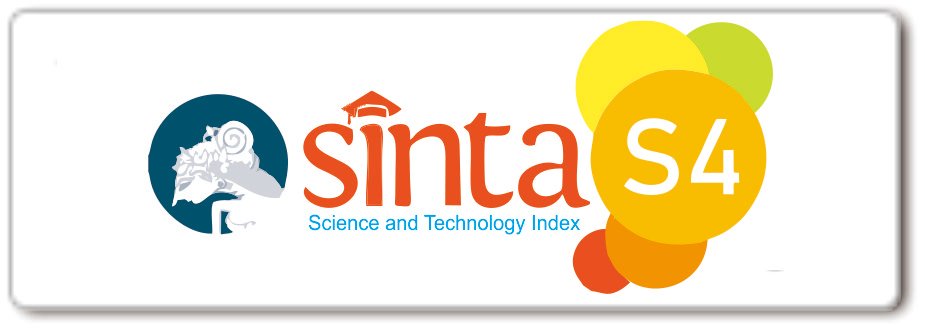EFEKTIVITAS SULFUR TOPIKAL DIBANDINGKAN DENGAN PERMETRIN DALAM TATA LAKSANA SKABIES: LAPORAN KASUS BERBASIS BUKTI
DOI:
https://doi.org/10.33820/mdvi.v47i4.369Keywords:
permetrin, sulfur, skabies, salep 2-4Abstract
Background: Scabies is a dermatologic disease caused by Sarcoptes scabiei var hominis infestation. It is commonly found in developing country with high population density. There are currently several available treatments for scabies. In Indonesia, there are two treatments provided by goverment which are 5% permethrin cream and 2-4 ointment (2% salicylid acid + 4% sulphur). Permethrin is the first line treatment for scabies. The aim of this evidence based case report is to compare the efficacy of topical sulphur with permethrin for treatment of scabies.
Method: Systematic literature searching was conducted on Pubmed, Cochrane, Sciencedirect, EBSCO, Proquest and Scopus using relevant keywords. Studies comparing topical sulphur with permethrin in scabies patients were included in this study. The included studies were critically appraised to give recommendation on scabies treatment.
Result: From screening of 11 fulltext articles, three articles were suitable for this studies which consist of one meta-analysis and two randomized controlled trial.
Discussion: All the articles included showed permethrin has better efficacy compared to topical sulphur in treating scabies. Treatment with permethrin had higher cure rates with less side effect.
Conclusion: Based on current best evidence, topical sulphur is inferior compared to permethrin in treating scabies, therefor topical sulphur should not be chosen unless permethrin can not be used.
Downloads
References
2. WHO. Neglected tropical diseases Scabies [Serial dalam Internet]. 2015. [Disitasi 6 November 2019]. Tersedia di: http://www.who.int/neglected_diseases/diseases/scabies/en
3. Karimkhani C, Colombara D V., Drucker AM, Norton SA, Hay R, Engelman D, dkk. The global burden of scabies: a cross-sectional analysis from the Global Burden of Disease Study 2015. Lancet Infect Dis. 2017;17(12):1247–54.
4. Rihatmadja R, Miranda E, Wicaksono MM, Widaty S. Why are they hard to treat? A preliminary survey to predict important factors causing persistent scabies among students of religion-affiliated boarding schools in Indonesia. Dermatology Reports. 2019;11(S1):41–3.
5. Hay RJ, Steer AC, Engelman D, Walton S. Scabies in the developing world-its prevalence, complications, and management. Clin Microbiol Infect. 2012;18(4):313–23.
6. Paramita K, Sawitri. Profil skabies pada anak. BIKKK. 2015;27(1):41–7.
7. Kementerian Kesehatan RI. Formularium nasional. Jakarta: Kemenkes RI; 2016.
8. Salavastru CM, Chosidow O, Boffa MJ, Janier M, Tiplica GS. European guideline for the management of scabies. J Eur Acad Dermatology Venereol. 2017;31(8):1248–53.
9. Monsel G, Olivier C. Management of scabies. Skin Therapy Lett. 2012;17(3):1–7.
10. Stamm L V., Strowd LC. Ignoring the “Itchâ€: The Global Health Problem of Scabies. Am J Trop Med Hyg. 2017;97(6):1647–9.
11. Ishii N, Asai T, Asahina A, Ishiko A, Imamura H, Kato T, et al. Guideline for the diagnosis and treatment of scabies in Japan (third edition): Executive Committee of Guideline for the Diagnosis and Treatment of Scabies. J Dermatol. 2017;44(9):991–1014.
12. Ibraheem NM. Controlled Clinical Trials: Comparison The efficacy of some Single Topical Scabies Treatment Modalities versus Combined Topical Modalities. Res J Pharm Technol. 2019;12(3):1361.
13. Chandra EN. Uji Banding Efektifitas Krim Permetrin 5% dan Salep 2-4 pada Pengobatan Skabies (Thesis). Semarang: Universitas Diponegoro; 2004.
14. Centre for Evidence-Based Medicine. Critical Appraisal tools [Serial di Internet]. 2014 [Disitasi 6 November 2019]. Tersedia di: https://www.cebm.net/2014/06/critical-appraisal/
15. Thadanipon K, Anothaisintawee T, Rattanasiri S, Thakkinstian A, Attia J. Efficacy and safety of antiscabietic agents: A systematic review and network meta-analysis of randomized controlled trials. J Am Acad Dermatol. 2019;80(5):1435–44.
16. Al Jaff DAA, Amin MHM. Comparison the Effectiveness of Sulphur Ointment, Permethrin and Oral Ivermectin In Treatment of Scabies. Res J Pharm Biol Chem Sci. 2018;9(1):670–6.
17. Abdel-Raheem TA, Méabed EMH, Nasef GA, Abdel Wahed WY, Rohaim RMA. Efficacy, acceptability and cost effectiveness of four therapeutic agents for treatment of scabies. J Dermatolog Treat. 2016;27(5):473–9.
18. Sungkar S. Skabies : Etiologi, Patogenesis, Pengobatan, Pemberantasan, dan Pencegahan. Jakarta: Badan Penerbit FKUI; 2016.h.66–70.
19. Strong M, Johnstone P. Interventions for treating scabies. Evidence-Based Child Heal. 2011;6(6):1790–862.
20. Albakri L, Goldman RD. Child Health Update: Permethrin for scabies in children. Can Fam Physician. 2010;56:1005–6. 21. Karthikeyan K. Treatment of scabies: Newer perspectives.
Postgrad Med J. 2005;81(951):7–11.
22. DÃaz M, Acosta M, Cazorla D. Efficacy, safety and
acceptability of precipitated sulphur petrolatum for topical treatment of scabies at the city of Coro, Falcon State, Venezuela. Rev Investig Clin. 2004;56(5):615–22.
23. Inra NH. Perbandingan Efektivitas Salep 2-4 dan Permethrin pada Pengobatan Skabies di Pondok Pesantren Al-Ashr Al- Madani. Pros Kedokt. 2020;6(1):247–52.
24. Mila-Kierzenkowska C, Woźniak A, Krzyzyńska- Malinowska E, Kałuzna L, Wesołowski R, Poćwiardowski W, et al. Comparative efficacy of topical pertmehrin, crotamiton and sulfur ointment in treatment of scabies. J Arthropod Borne Dis. 2017;11(1):1–9.














